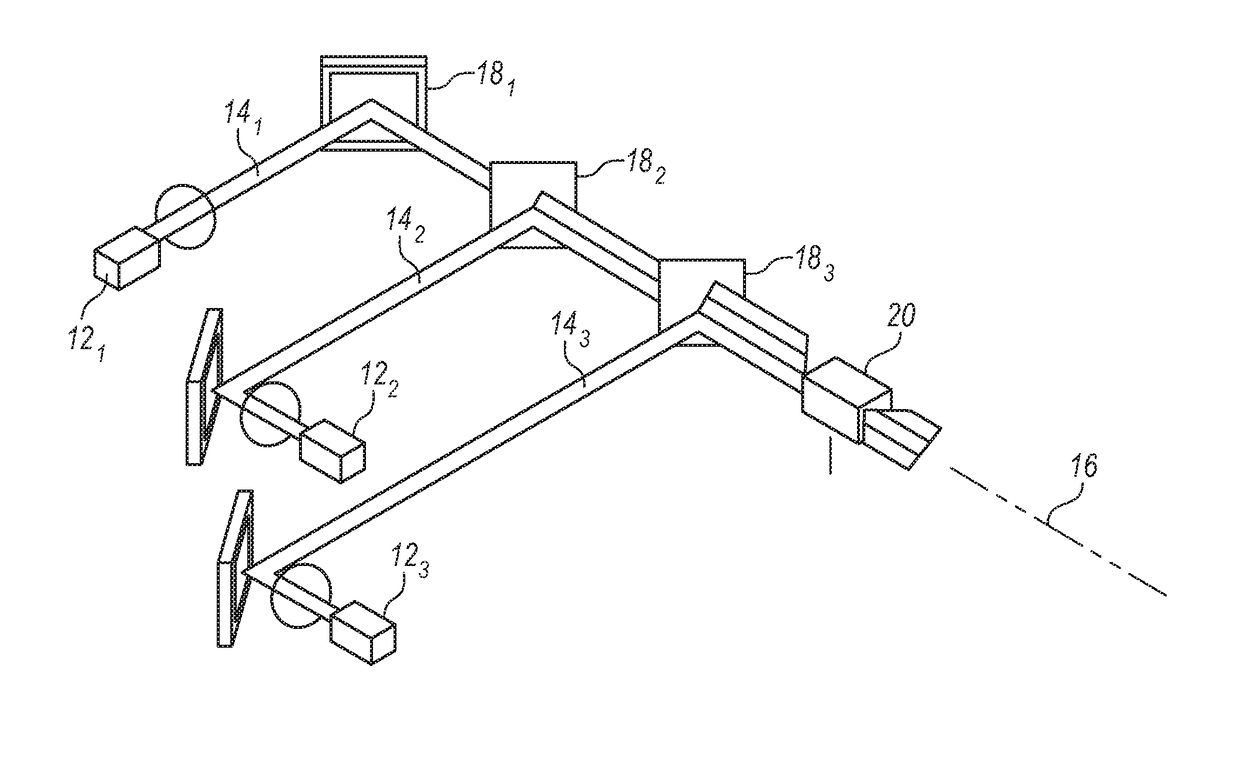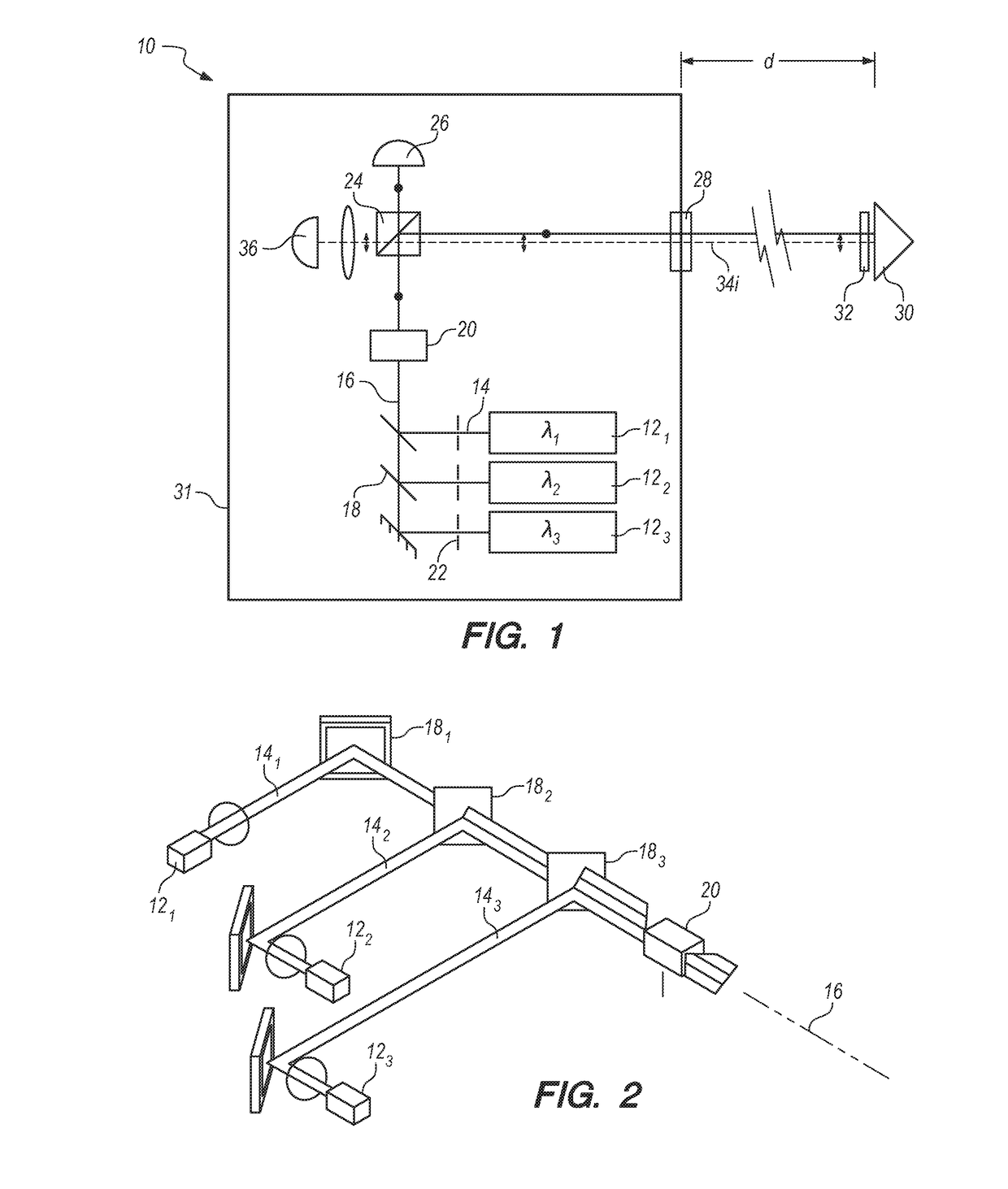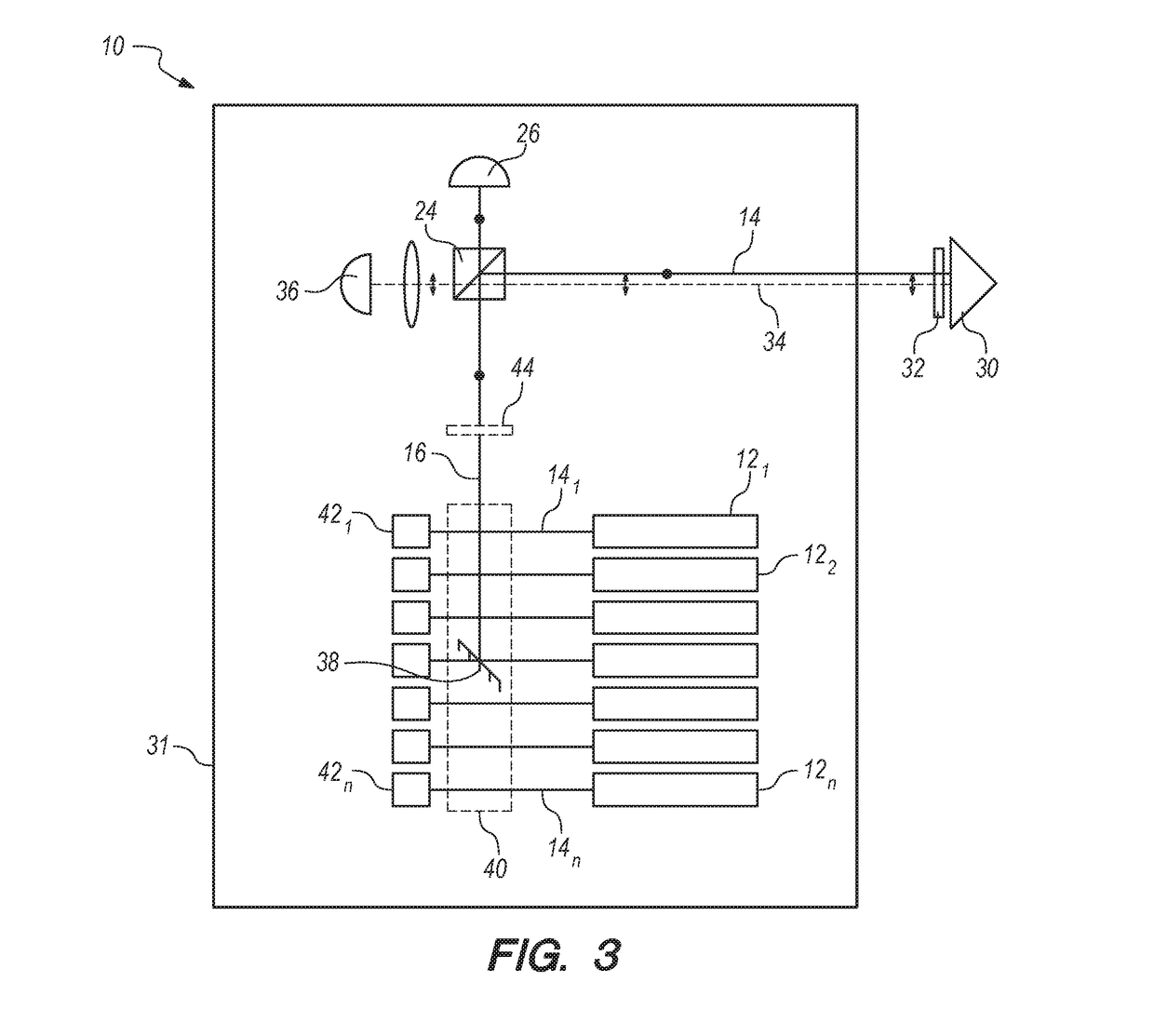Wavelength Optimization For Underwater Optical Communications
- Summary
- Abstract
- Description
- Claims
- Application Information
AI Technical Summary
Benefits of technology
Problems solved by technology
Method used
Image
Examples
Embodiment Construction
[0016]Referring initially to FIGS. 1-2, a system for environmental spectroscopy and wavelength optimization can be shown and can be generally designated by reference character 10. As shown, system 10 can include an array of n lasers 12i, of which representative lasers 121, 122 and 123 are shown in FIG. 1. Each laser 12i, can have a corresponding wavelength λi, which can be different from the other wavelengths λi for lasers 12. Wavelength λi can be in the blue-green portion of the visible spectrum (from approximately 475-550 nm) although other wavelengths are certainly possible for the present invention.
[0017]Each of the lasers 12 can generate a respective beam 14, as shown in FIG. 1. For the present invention, the plurality of lasers 12 can be manipulated to illuminate beams 14 along a coincident axis 16. To do this, the present invention according to several embodiments can include a plurality of dichroic mirrors 18, with each dichroic mirror corresponding to a respective laser 12 ...
PUM
 Login to View More
Login to View More Abstract
Description
Claims
Application Information
 Login to View More
Login to View More - Generate Ideas
- Intellectual Property
- Life Sciences
- Materials
- Tech Scout
- Unparalleled Data Quality
- Higher Quality Content
- 60% Fewer Hallucinations
Browse by: Latest US Patents, China's latest patents, Technical Efficacy Thesaurus, Application Domain, Technology Topic, Popular Technical Reports.
© 2025 PatSnap. All rights reserved.Legal|Privacy policy|Modern Slavery Act Transparency Statement|Sitemap|About US| Contact US: help@patsnap.com



